M3.0 solar flare erupts from geoeffective AR 3014, follows M5.6 on May 19
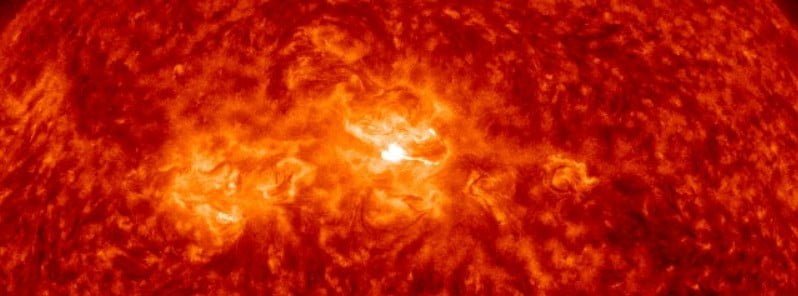
A moderately strong solar flare measuring M3.0 erupted from geoeffective Active Region 3014 at 07:45 UTC on May 20, 2022. The event started at 07:35 UTC and ended at 07:49.
A 10cm Radio Burst lasting 2 minutes with a peak flux of 210 sfu was associated with the event.
A 10cm radio burst indicates that the electromagnetic burst associated with a solar flare at the 10cm wavelength was double or greater than the initial 10cm radio background.
This can be indicative of significant radio noise in association with a solar flare. This noise is generally short-lived but can cause interference for sensitive receivers including radar, GPS, and satellite communications.
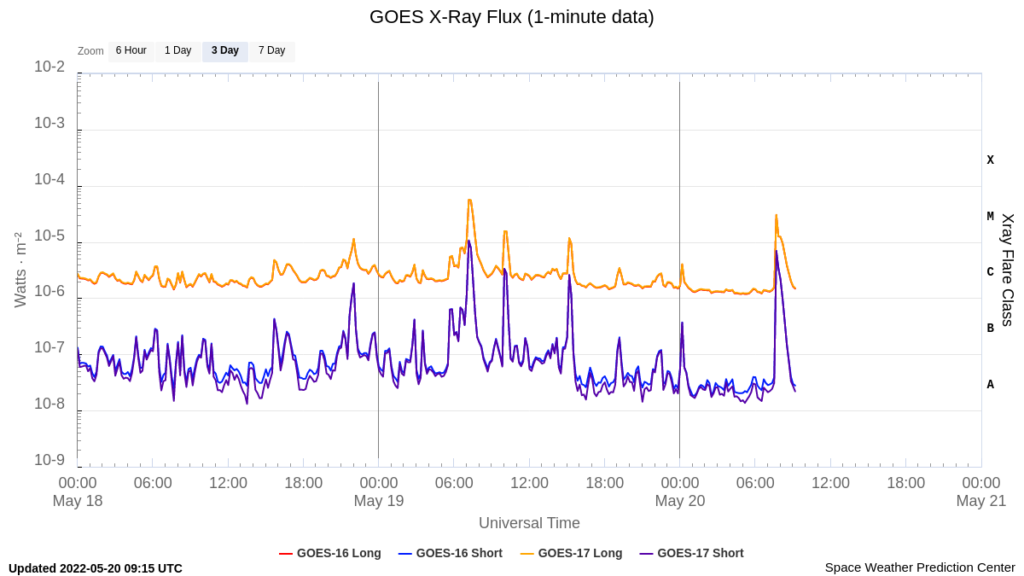

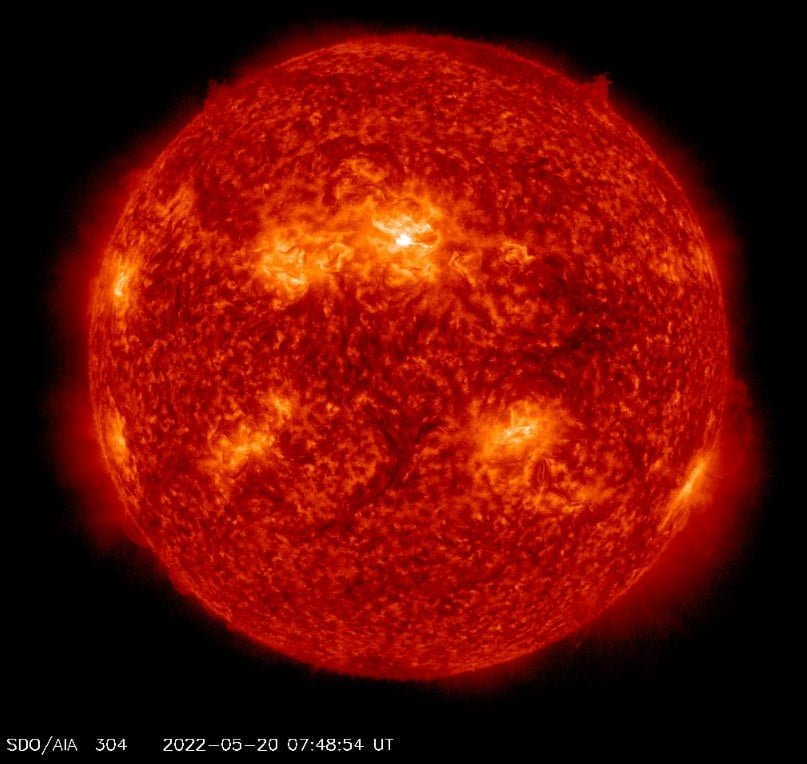

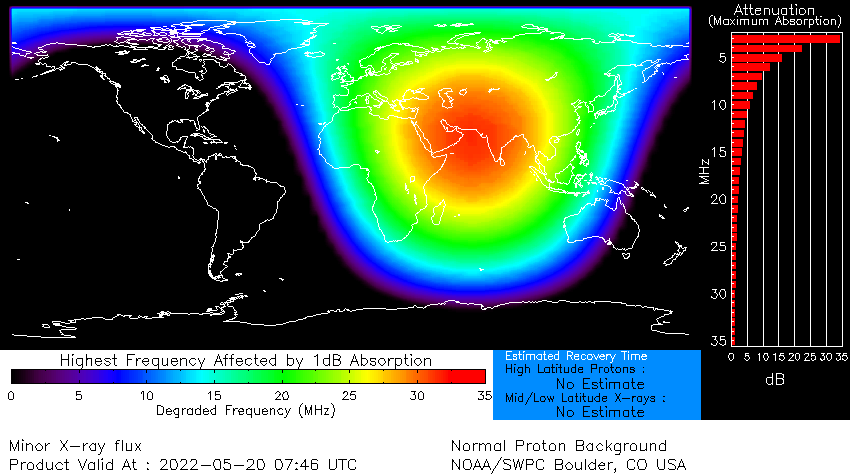

AR 3014 is located at the center of the solar disk which favors Earth-directed coronal mass ejections.
It has ‘beta-gamma-delta’ magnetic configuration and is capable of producing strong to major solar flares.
Earth-directed CMEs from this region are likely over the next couple of days.
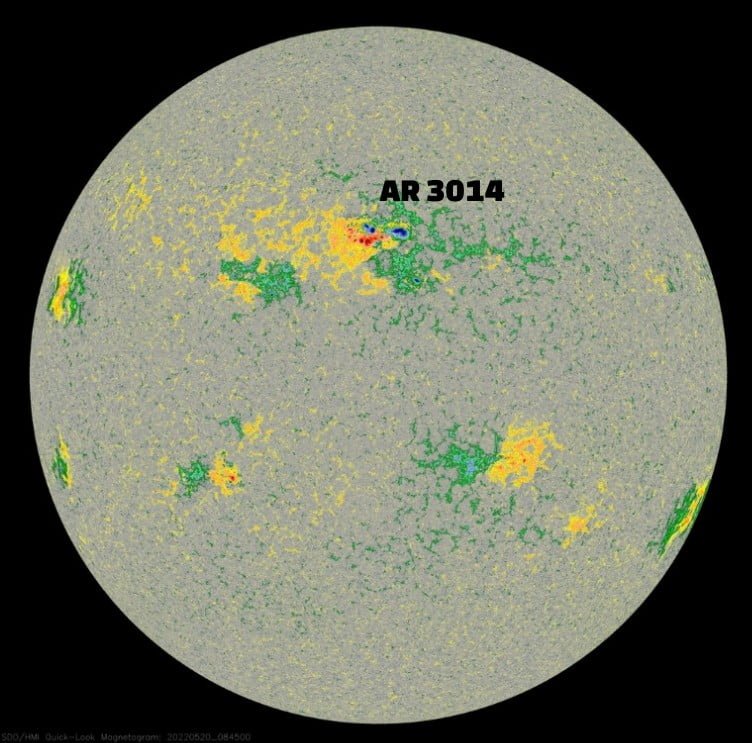

Solar activity was at moderate levels in 24 hours to 00:30 UTC on May 20 due to several M-class flares of which the largest was M5.6 at 07:19 UTC on May 19.
Eight sunspot groups were present on the visible disk and background X-ray flux continued at C-class levels.
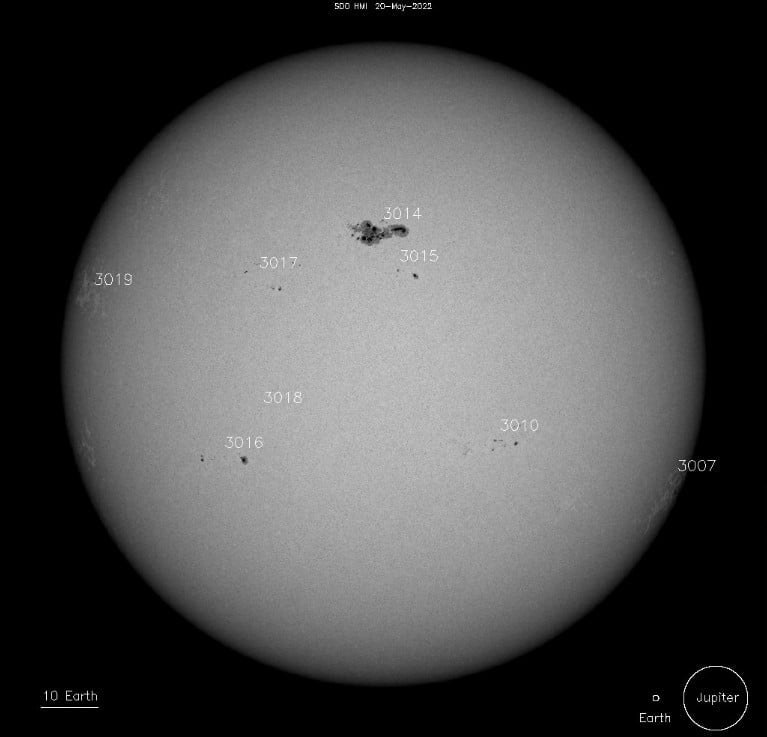

Region 3014 (N22E04, Ekc/beta-gamma-delta) grew further in penumbral area and its magnetic shear was still considered moderate during the period. The region was responsible for two M-class flares, the largest an M1.5/1n flare at 10:09 UTC.
Region 3017 (N13E27, Cro/beta) remained a simple, non-complex region and underwent only minor changes.
A hidden complexity existed as the aforementioned M5.6 flare source seemed to originate between Regions 3014 and 3017, optical wavelengths indicated the flare source on the fringe of Region 3017.
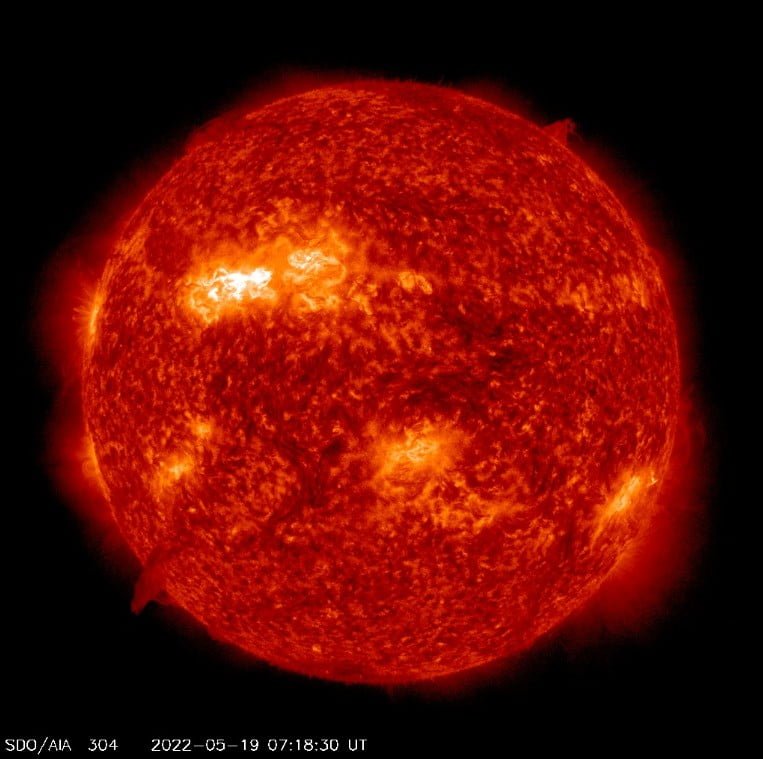

The remaining regions experienced low activity, underwent minor changes, or were in slow decay.
Several CMEs were observed in coronagraph imagery, but all appeared to be related to beyond the limb activity.
Although analysis of these events continues, initial analysis suggests non-geoeffective components.
References:
1 Forecast Discussion Issued: 2022 May 20 0030 UTC – Prepared by the U.S. Dept. of Commerce, NOAA, Space Weather Prediction Center
Featured image: M3.0 solar flare on May 20, 2022. Credit: NASA SDO/AIA 304


Commenting rules and guidelines
We value the thoughts and opinions of our readers and welcome healthy discussions on our website. In order to maintain a respectful and positive community, we ask that all commenters follow these rules.